
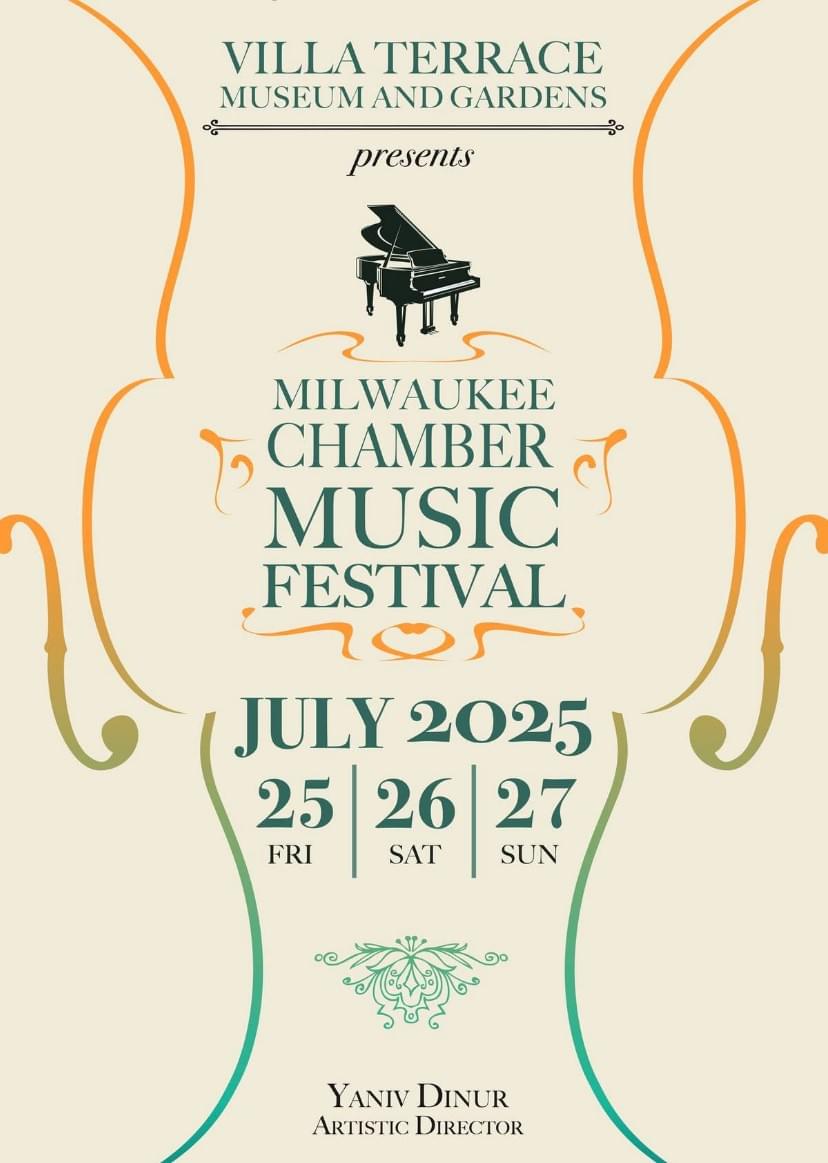
Opening night
Friday, July 25, 2025 at 7pm, Villa Terrace
Jay Shankar, clarinet
Ilana Setapen & Dylana Leung, violins
Elizabeth Breslin, viola
Peter Thomas, cello
Yaniv Dinur, piano
Program:
Schoenfield - Cafe Music
Mozart - Clarinet Quintet
-Intermission-
Dvorak - Piano Quintet no. 2
Beethoven's Septet
Saturday, July 26, 2025 at 7pm, Villa Terrace
Jay Shankar, clarinet
Catherine Van Handel, bassoon
Matthew Annin, French Horn
Jeanyi Kim, violin
Alejandro Duque, viola
Madeleine Kabat, cello
Brittany Conrad, bass
Yaniv Dinur, piano
Program:
CPE Bach - Six Sonatas for Clarinet, Bassoon and Piano
Martinu - Three Madrigals for Violin and Viola
* intermission *
Beethoven - Septet for Clarinet, Bassoon, French Horn, Violin, Viola, Cello, and Bass
Closing Concert: Schumann & Stravinsky
Sunday, July 27, 2025 at 2:00pm, Villa Terrace
Alisa Jordheim, soprano
Jinwoo Lee, violin
Yaniv Dinur, piano
Program:
Schumann - Dichterliebe (A Poet's Love)
* intermission *
Le Beau - Romance
Brahms - Violin Sonata no. 3
Tickets
musicians

Yaniv Dinur, artistic director & piano
Newly appointed Music Director of the Tallahassee Symphony Orchestra, and Music Director of the New Bedford Symphony Orchestra, Yaniv Dinur is lauded for his insightful interpretations and unique ability to connect with concertgoers of all ages and backgrounds, from season subscribers to symphony newcomers.
Season 25/65 marks the beginning of Dinur’s ninth season with the New Bedford Symphony. Under his leadership, the New Bedford Symphony has been nationally recognized for its bold, engaging programming and artistic quality, leading to the League of American Orchestras selecting the orchestra to perform at the 2021 League Conference.
Dinur served as Resident Conductor of the Milwaukee Symphony Orchestra between 2016-2024, during which he conducted hundreds of concerts. Recognizing his leadership and impact, the Milwaukee Business Journal selected him as a 40 Under 40 honoree in 2019, an award for young professionals making a difference in the community. Dinur remains in close contact with the Milwaukee Symphony. He recently returned to the orchestra as a guest conductor, and he plays chamber music with members of the MSO year-round. He is the founder and artistic director of the Winterlude Chamber Music Series at the Villa Terrace Museum as well as the Milwaukee Chamber Music Festival.
Yaniv Dinur made his conducting debut at the age of 19 with the National Symphony Orchestra of Ireland, which led to multiple return engagements. Since then, he has conducted orchestras around the world, including the Israel Philharmonic, Jerusalem Symphony, Houston Symphony, Fort Worth Symphony, Louisiana Philharmonic, Detroit Symphony, New World Symphony, San Antonio Symphony, Portugal Symphony Orchestra, Sofia Festival Orchestra/Bulgaria, State Orchestra of St. Petersburg, Torino Philharmonic, Orchestra Filarmonica de Madrid, Edmonton Symphony, and the National Arts Centre Orchestra in Ottawa. Recent and upcoming guest conducting highlights include debuts with the Utah Symphony, Rochester Philharmonic, Wisconsin Chamber Orchestra, Charlotte Symphony, New Hampshire Music Festival, and Present Music in Milwaukee. Dinur has collaborated with world-renowned soloists such as Pinchas Zukerman, Yefim Bronfman, and Itzhak Perlman.
Dinur is the winner of numerous awards, among them the 2019 Sir Georg Solti Conducting Fellow Award, 2017 and 2016 Solti Career Assistance Awards, 2nd Prize at the 2009 Mata International Conducting Competition in Mexico, and the Yuri Ahronovitch 1st Prize in the 2005 Aviv Conducting Competition in Israel. He is also a recipient of the America-Israel Cultural Foundation and the Zubin Mehta Scholarship Endowment.
Born in Jerusalem, Dinur began studying the piano at the age of six with his aunt, Olga Shachar. He continued his studies with Prof. Alexander Tamir, and most recently with Edna Golandsky. He studied conducting in Israel with Dr. Evgeny Zirlin and Prof. Mendi Rodan, and holds a Doctorate in Orchestral Conducting from the University of Michigan School of Music, Theatre & Dance, where he was a student of Prof. Kenneth Kiesler.
Yaniv Dinur resides in Milwaukee with his wife, Christina, and two daugthers, Josephine and Alexandra.

Jeanyi Kim, violin
Jeanyi Kim is the Associate Concertmaster of the Milwaukee Symphony Orchestra, and Concertmaster of Milwaukee Musaik (also known as the Milwaukee Chamber Orchestra). A Toronto native, Kim's command as a violinist and orchestral musician have brought her to illustrious venues around the world, including Carnegie Hall, the Barbican Centre, Salle Pleyel, and the Concertgebouw. As a guest, she has appeared as Assistant Leader of the London Symphony Orchestra (UK) under Sir Colin Davis and Valery Gergiev, Concertmaster of the Kalamazoo Symphony Orchestra, Principal Second of the National Arts Centre Orchestra, and substitute musician of the Philadelphia Orchestra. Of her featured solo recital, the Journal Sentinel praised her performance, drawing likeness to that of "a glamorous international star." Kim is equally comfortable in soloist, chamber, and orchestral roles as well as a variety of styles, and her playing has been described as "engrossing…intelligent," and simultaneously having "easy grace" (Journal Sentinel) and "fistfuls of technical fireworks." (Urban Milwaukee)
Recent solo appearances include performances with the Milwaukee Symphony Orchestra, Milwaukee Musaik Chamber Orchestra, Sunflower Music Festival Orchestra, Kenosha Symphony Orchestra and Sheboygan Symphony Orchestra. A passionate and energetic chamber musician, Kim is a founding member of the Philomusica Quartet, and is a regular artist at the esteemed Sunflower Music Festival. She has performed in a number of prominent chamber music series, including Frankly Music, Dame Myra Hess, Fine Arts at First, Searl Pickett, as well as on radio broadcasts for Wisconsin Public Radio, WFMT Chicago and Kansas Public Radio. In addition, she serves as Vice President of the Board of Milwaukee Musaik.
A dedicated teacher, Kim has held faculty positions at various institutions, including University of Wisconsin-Parkside and University of New Haven, and during summers has taught at several festivals, including the Eleazar de Carvalho International Music Festival (Brazil) and the Elm City ChamberFest. Under her guidance, many of her students have gone on to win various prizes and honors. Kim is also a frequent adjudicator of competitions. Her major teachers include Erick Friedman, Kyung Yu, Rebecca Henry and Berl Senofsky, and important mentors include Aldo and Elizabeth Parisot, Sidney Harth, and Tokyo String Quartet. As a graduate student at Yale, she served as a teaching assistant to Erick Friedman. Kim holds a DMA from Yale University, where she also earned her BA, MM, and MMA degrees. As an undergrad, Kim was the recipient of the Bach Society Award.
Kim recorded for a Boosey & Hawkes publication/CD entitled, 10 Violin Solos from the Masters, released by Hal Leonard. She performs on a 1705 Petrus Guarnerius violin.
She and her husband, violinist and conductor Alexander Mandl, enjoy the adventures of raising their two young children, Miranda and Nikolas, frequenting their favorite coffee shops, biking, sailing, and traveling.
More information on Philomusica Quartet and Milwaukee Musaik can be found here:
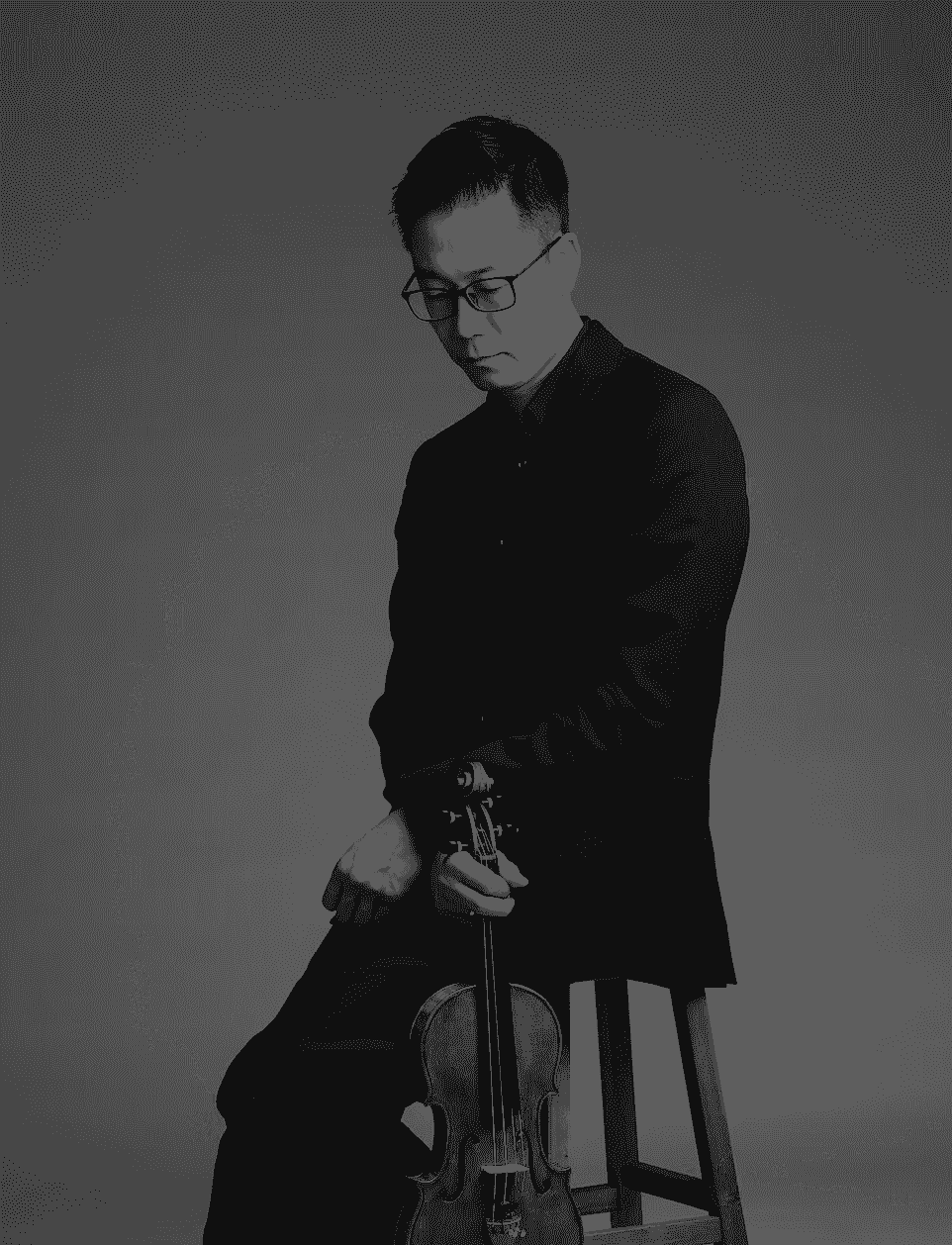
Jinwoo Lee, violin
Jinwoo Lee, a native of South Korea, began playing the violin at the age of four. He is an international concert violinist with recitals and concerts with orchestras in USA, Korea, Germany, Switzerland, Slovenia, France, Italy, Netherlands, and Austria, to name a few.
He is a frequent prize winner of international competitions, including 1st prize at the Sorantin Competition San Angelo, Texas (2007), 2nd & special prizes at the 20th International Rodolfo Lipizer Violin Competition in Gorizia, Italy(2001), special prize at the International Georg Kulenkampff Violin Competition in Cologne, Germany (1999), 2nd prize (1st prize not awarded), Audience & Bach prizes at the 33rd International Tibor Varga Violin Competition in Sion, Switzerland(1999), 1st & special prizes at the 2nd International Lois Spohr Violin Competition for young violinists in Weimar, Germany (1998), 1st prize at the National German Competition “Jugend Musiziert” Categories solo violin & chamber music (1998), Special prize at the 7th International Yfrah Neaman Competition in Mainz, Germany (1997). He was the winner of the MSM school concerto competition (2008) and the Waldo Mayo Memorial Violin Competition(2009). Most recently, he and his duo partner Eunice Kim were awarded the prize for Best Duo at the 20th International Violin & Piano Masterclasses of the Music Academy of Lausanne, Switzerland (2010).
Mr. Lee graduated from the Humboldt Grammar School in Cologne, Germany in 2001. He studied with Stephen Clapp and Donald Weilerstein at The Juilliard School, where he received his bachelor’s degree in 2006. Two years later Mr. Lee received his master’s Degree from The Juilliard School under the tutelage of Robert and Nicholas Mann. He continued his studies with them at the Manhattan School of Music, where he received his Artist Diploma at in 2009 and Doctorate in 2016.
His former teachers include Michael Davis, Maria Giesy, Christiane Hutcap, Hyo Kang, Jongsuk Li, Igor Ozim, Jaegwang Song and Viktor Tretjakov. He has had masterclasses with Pierre Amoyal, Bruno Canino, Pamela Frank, Miriam Fried, Leonidas Kavakos, Masao Kawasaki, Herman Krebbers, Cho-Liang Lin, Martin Lovett, Yfrah Neaman and Sylvia Rosenberg.
He is currently the first concertmaster of the Neue Philharmonie Westfalen. He was a violin faculty at the Robert Schumann Musikhochschule in Düsseldorf from 2018 until 2022. In 2023, he was appointed concertmaster of the Milwaukee Symphony.

Dylana Leung, violin
A native of Chicago, Dylana Leung joined the MSO in 2010. Prior to holding this position, she was the assistant concertmaster of the Elgin Symphony Orchestra, section member of the late Syracuse Symphony Orchestra, and concertmaster of the Civic Orchestra of Chicago.
Originally a double major candidate in Engineering and Violin Performance at the University of Michigan, Dylana transferred to the Cleveland Institute of Music to continue her studies with Paul Kantor, where she received her Bachelor of Music degree and Professional Studies Certificate. She then spent a year studying with Robert Chen, concertmaster of the Chicago Symphony Orchestra at the Chicago College of Performing Arts. Other notable teachers include Cyrus Forough and Stephen Rose.
Dylana was 2nd prize winner of the 2000 Stulberg International String Competition and National Finalist at the American String Teachers Association Competition. As 1st prize winner in various Young Artist Concerto competitions, she has appeared as soloist with the DuPage, Elmhurst, Evanston, Northwest, and Chicago Youth Symphony Orchestras. She also spent several summers at the Aspen Music Festival as a Fellowship Recipient.
Most days you'll find Dylana running along Lake Drive. She always has a stash of dark chocolate in her mailbox at work, and has learned how to cook a variety of Korean dishes; dol sot bibimbap, kalbi, and kimchi jjigae to name a few. During college football season, she follows the Michigan Wolverines, but will happily watch the Badgers post a win to the Buckeyes any day.

Ilana Setapen, violin
Since her solo orchestral debut at age 15, Ilana Setapen has been flourishing as a violinist with a powerful and original voice. She is hailed by the Milwaukee Journal Sentinel as a violinist with “a sparkling sound” and “the kind of control that puts an audience completely at ease.” She is currently the First Associate Concertmaster of the Milwaukee Symphony Orchestra.
In recent seasons, Setapen has had solo performances with the Milwaukee Symphony, Festival City Symphony, and the Amarillo Symphony, among others. She also held the Assistant Concertmaster position of the Grant Park Music Festival Orchestra in Chicago for 6 years and is a favorite guest concertmaster with the Chicago Philharmonic. In recent summers, she has performed at the Olympic Music Festival on Bainbridge Island and the Lakes Area Music Festival in Brainerd, Minnesota. She has also served on the faculty at Luzerne Music Center summer festival in Lake Luzerne, New York and is currently on the faculty at Center Stage Strings at the University of Michigan.
At the age of 21, Setapen won the concertmaster position of the Riverside Philharmonic in Los Angeles. She has also held concertmaster positions with the Juilliard Orchestra, the Colburn Orchestra, the American Youth Symphony, the National Repertory Orchestra, and the USC Thornton Symphony. As a committed chamber musician, Setapen is in demand as a collaborator throughout the Midwest. She performs frequently with Present Music. Her talent has led her to collaborations with such distinguished artists as Ron Leonard, Lynn Harrell, Toby Appel, Cynthia Phelps, Joseph Kalichstein, Robert DeMaine, Paul Coletti, the Fine Arts Quartet, Stefan Hersh, David Geber, and Joan Tower. Solo and chamber music performances have brought her abroad to China, France, Brazil, Holland, England, Monaco, and Italy.
Setapen grew up in Amarillo, Texas. Her father is a conductor and her first violin teacher was her mother. She was a student of Robert Lipsett both at the University of Southern California and at the Colburn Conservatory. She received her Master of Music Degree from the Juilliard School as a student of Donald Weilerstein and Ronald Copes. She is also a dedicated educator and loves teaching. In her spare time, Setapen enjoys spending time with her husband and their two sons and swing dancing.
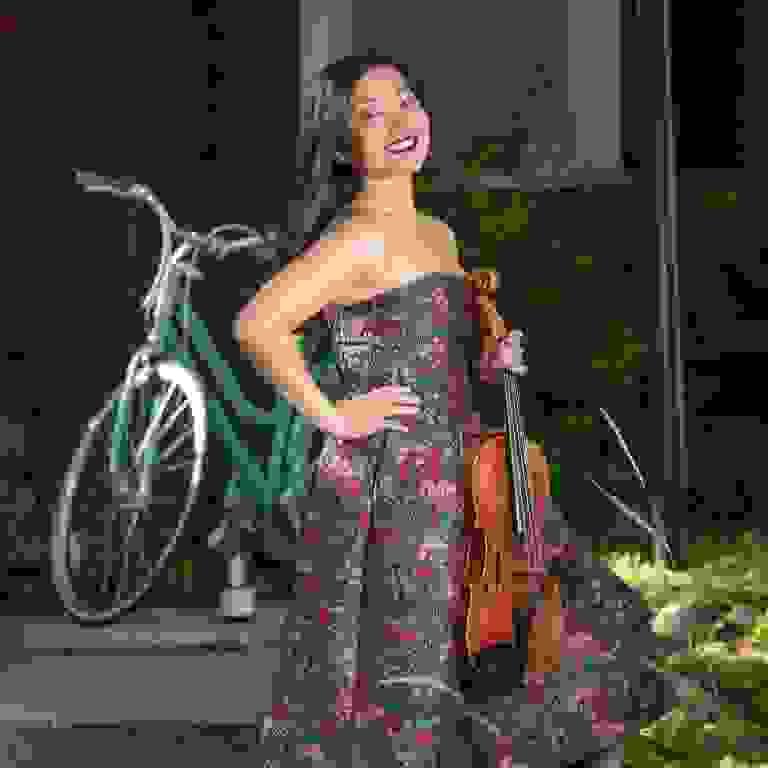
Elizabeth Breslin, viola
Beth joined the Milwaukee Symphony in March 2016. Previously, she was a member of the San Antonio Symphony and has played with the Houston and Saint Louis Symphonies. Over the summers, Beth is a member of the Grant Park Festival Orchestra in Chicago.
At the age of 6, Beth began Suzuki violin lessons in her hometown Princeton, New Jersey with Tobi Andrews, and then continued her studies with Allen Lieb and Louise Behrend in New York City. During middle school, she played the viola for the first time and immediately fell in love with the deep, rich tone, and was drawn to the supporting role and inner harmonies the viola is often given.
Beth received her B.M. in 2008 from Oberlin Conservatory where she studied with Peter Slowik. During her time at Oberlin, she had the honor of going on tours to China, New York City, and San Diego with the Oberlin Orchestra and Contemporary Music Ensemble. After graduating from Oberlin, Beth attended The Cleveland Institute of Music where she received her M.M. under the tutelage of Robert Vernon.
From 2010-2013, Beth was a member of the New World Symphony in Miami Beach, a three year fellowship program directed by Michael Tilson Thomas. In her first year, she performed the Viola Concerto by Bela Bartok with the orchestra and was praised for "bringing to the work a warm, dark tone" and having the virtuosity of "a gypsy violist" in The South Florida Classical Review.
Beth has attended several festivals such as the Tanglewood Music Center, where she performed with the Boston Symphony Orchestra and The National Repertory Orchestra, where she served as principal and performed Mozart's Sinfonia Concertante, as well as Kneisel Hall, and Round Top Festival Institute.
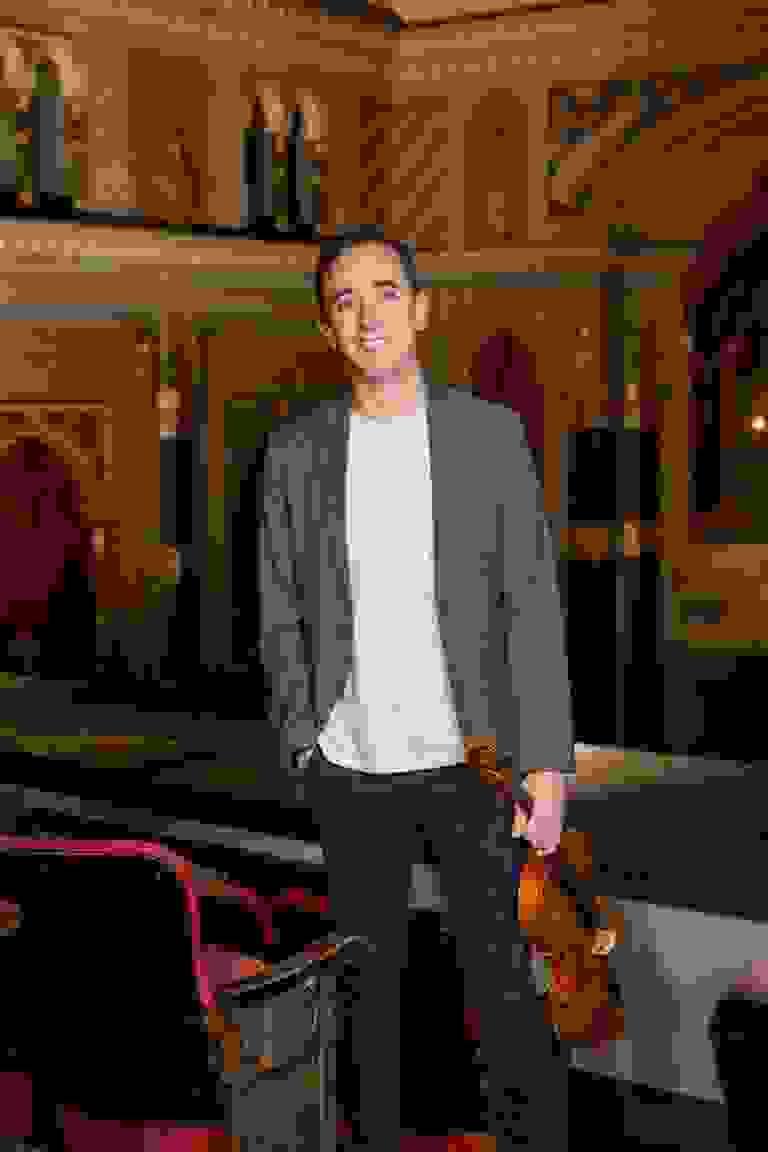
Alejandro Duque, viola
Coming from Austin, Texas, Alejandro was a member of the Austin Symphony and the indie band Montopolis. He has performed at numerous music festivals such as the Tanglewood Music Center, Aspen Music Festival, Music Academy of the West, and the New York String Orchestra Seminar. More recently, he has been a guest artist at the Sunset ChamberFest, Caroga Lake Music Festival, and Lakes Area Music Festival. Alejandro received his Bachelor of Music degree at the University of Southern California under the mentorship of Donald McInnes and most recently his Master of Music degree at UT Austin under Roger Myers.

Madeleine Kabat, cello
Madeleine Kabat gave her solo debut with the Cleveland Orchestra at age 18, and now enjoys a varied career as an orchestral, chamber, and solo cellist. Currently a member of the Milwaukee Symphony’s cello section, Madeleine performed as principal for her first 7 months with the orchestra while serving as Acting Assistant Principal Cello. She has also performed as a substitute with the Cleveland Orchestra, Los Angeles Philharmonic, Houston Symphony, St. Paul Chamber Orchestra, and the Orpheus Chamber Orchestra. She has appeared as guest principal cellist with the Orquesta Philarmonia Mexico, Madison Symphony, Mansfield Symphony, and CityMusic Cleveland.
Madeleine was the founding cellist of the Lysander Piano Trio (with whom she won a prize at the Fischoff Chamber Music Competition), and has acted as substitute cellist for the Jasper String Quartet. She has performed with members of Cleveland, Escher, Dover, and Attacca string quartets. The Fine Arts Quartet has invited her to join them in concerts annually since 2020. Madeleine recently performed in recital with pianists Simon Trpceski in Houston and Orion Weiss in Los Angeles, and at the Lev Aronson Legacy Festival in Dallas and the Sharon Lynne Wilson Center for the Arts in Brookfield WI. In a 2021 memorial concert honoring the late legendary cellist Lynn Harrell, she performed chamber music with violinist Anne-Sophie Mutter. Lynn had become a friend and mentor to her following a Frankly Music concert where they performed Schoenberg’s Verklarte Nacht and Mendelssohn’s Octet together. In 2011, Madeleine was named Visiting Artist at La Sierra University in Riverside, CA. She has appeared on faculty at Clazz, Italy, twice as a featured artist for the Lima International Chamber Music Festival in Peru, and has also performed chamber music in China, Korea, and in Colombia numerous times as faculty artist of Medellin Festicamara. She has also given masterclasses at Southern Methodist University in Dallas, the University of Wisconsin at Stevens Point, Northwestern State University, Eastern Michigan University, Minot State University (ND), Sahmyook University (Seoul, Korea) and at La Jolla’s SummerFest.
During her summers, Madeleine enjoys performing as principal cellist at the Lakes Area Music Festival (MN). She has won top prizes in the competitions of Fischoff, Hellam, and Klein International. Ms. Kabat holds diplomas from the Cleveland Institute of Music, Rice University, the Juilliard School, and most recently Oberlin Conservatory, where she served as teaching assistant to her professor, Darrett Adkins.

Peter Thomas, cello
Peter J. Thomas has been a member of the Milwaukee Symphony Orchestra since 2008 and has performed around the world as a multi-genre soloist, clinician, educator, and chamber musician. Peter frequently performs with the 414 Quartet, Present Music, Carthage Trio, and in collaboration with multiple bands. He is also the co-founder of MusiConnect, a community-building music series that safely brought people together during the COVID-19 pandemic, which was nominated as one of Milwaukee’s best music festivals in 2021. Additionally, Peter was the manager and cellist of the award-winning classical crossover indie-rock band, I’m Not A Pilot, that toured extensively across the Midwest at colleges, performing art centers, music festivals and in educational collaboration concerts with high school orchestras from 2009-2016.
Mr. Thomas has presented clinics and workshops across the country through his innovative use of the electric cello and has recorded, arranged, and edited music for numerous artists including 2Cellos and The Piano Guys through Hal Leonard Music. Peter was most recently recognized as the Best Acoustic Musician in the Best of Milwaukee 2021 annual competition by the Shepherd Express. He was also the winner of the Wisconsin Area Music Industry (WAMI)’s String Player of the Year award in 2012 and 2015 and has been nominated for the award five times. As a songwriter, Peter’s original song “Only in Dreams” featuring vocalist Amanda Huff took home the 2019 WAMI award for Song of the Year as well as being recognized in the same category by the Milwaukee Journal Sentinel.
As an educator, Mr. Thomas holds the position of Adjunct Cello Professor at Carthage College and he also maintains a private cello studio of gifted musicians. During the summer, Peter teaches on faculty at CLAZZ, a multi-genre music festival in Arcidosso, Italy. He has also served on the faculty of the American Suzuki Institute each summer since 2013. Peter is the recipient of Civic Music Milwaukee’s 2018 Educator Award for Certificate of Excellence in Studio Music. His students have won competitions and full-tuition scholarships in music programs across the country. Peter has taught master classes at the University of Minnesota-Twin Cities, UW-Stevens Point, UW-Whitewater, Lawrence University, Gustavus Adolphus College, Eastern Michigan University, Maranatha Baptist University, Washington College, and at dozens of high schools across the state of Wisconsin.
Prior to joining the MSO, Mr. Thomas performed with the Dayton Philharmonic Orchestra, Columbus Symphony Orchestra, and the New World Symphony. Peter appeared as a soloist with the New World Symphony on two separate occasions, where he performed Richard Strauss’s ‘Don Quixote’ and Elgar’s Cello Concerto in E minor, Op. 85, as the 2008 Concerto Competition winner. Originally from Stevens Point, Wisconsin, where he was born into a family of musicians, Peter began playing cello at age five at the American Suzuki Talent Education Center and received degrees at the University of Minnesota-Twin Cities and the Cleveland Institute of Music. His primary teachers were Lawrence Leviton, Tanya Remenikova, Joseph Johnson, and Stephen Geber.
Peter enjoys the life of being a music ambassador and strives to spread awareness of the arts in the community through his many outlets. Peter performs on a fine English cello circa 1813 by maker Thomas Kennedy.
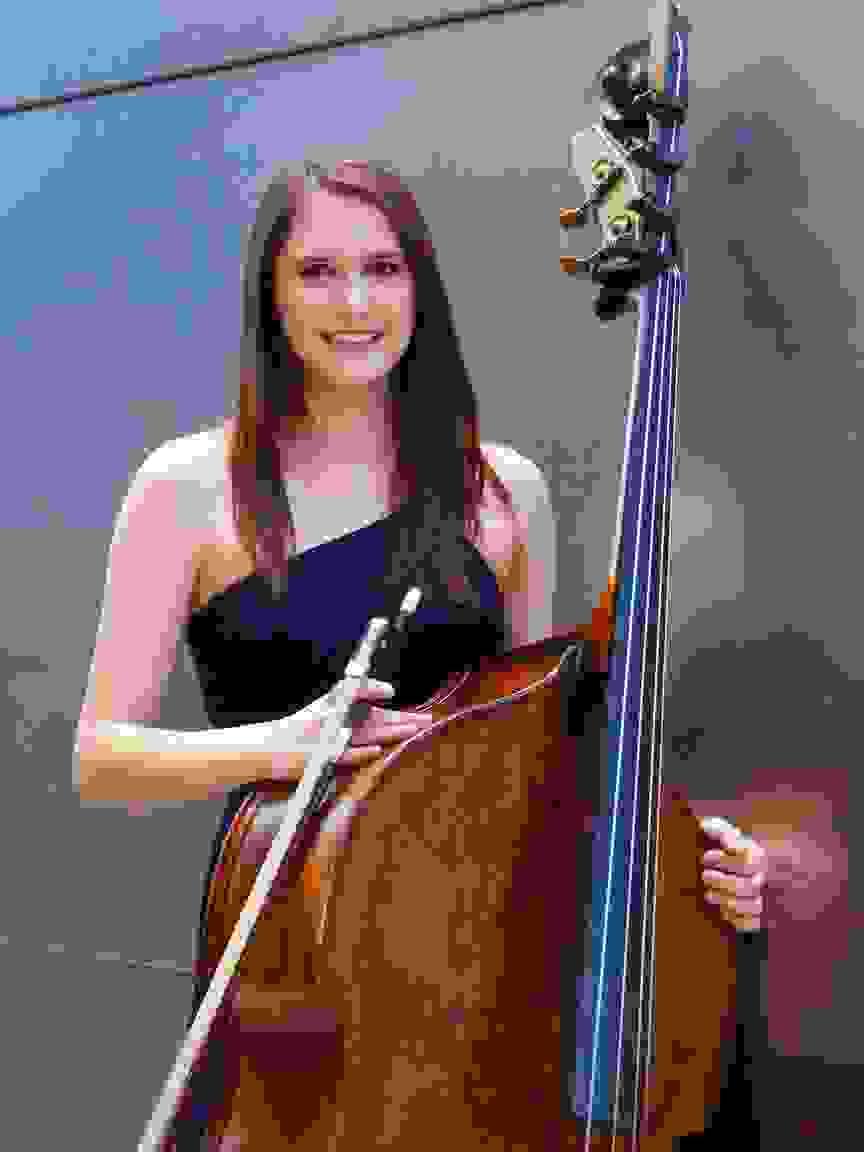
Brittany Conrad, bass
Double bassist Brittany Conrad joined the Milwaukee Symphony Orchestra in September of 2022. Originally from Lancaster, Pennsylvania, Ms. Conrad received her bachelor’s degree from the Colburn Conservatory of Music, where she studied with Peter Lloyd, and her master’s degree from the Juilliard School, where she studied with Harold Robinson and Rex Surany. She has also worked extensively with Joseph Conyers.
Before joining the MSO, Ms. Conrad performed three seasons with the Atlanta Symphony Orchestra. She has also made appearances with many major American orchestras including the Philadelphia Orchestra, the Minnesota Orchestra, the Baltimore Symphony Orchestra, and the Indianapolis Symphony Orchestra. She has also performed with the Budapest Festival Orchestra.
During the summer of 2019, Ms. Conrad was a fellow at the Tanglewood Music Center. Additionally, she has spent three summers as a member of the Verbier Festival Orchestra in Verbier, Switzerland, and has participated in programs such as the New York String Orchestra Seminar, the Wabass Institute, and the Perlman Music Program.

Jay Shankar, clarinet
Jay Shankar is an emerging clarinetist in the classical music world, recently appointed as the Assistant Principal/Second/and Eb Clarinet with the Milwaukee Symphony Orchestra. He was named the winner of the prestigious International Vandoren Competition and a semi-finalist at the International Crusell Competition in Finland, the only American clarinetist to be invited. Shankar is also an avid chamber musician, recently being invited to La Jolla Music Society and the Colburn Chamber Music Society where he collaborated with musicians such as Anthony McGill, Paul Huang, Geoff Nuttall, Inon Barnatan, and Pedja Mužijević. In addition, he is a frequent guest of world-class orchestras such as The Chicago Symphony Orchestra, The Cleveland Orchestra, Baltimore Symphony Orchestra, San Diego Symphony, and The Saint Paul Chamber Orchestra. He has performed as the Principal Clarinetist in orchestras including the National Youth Orchestra of Carnegie Hall in 2016, The Colburn Orchestra, and Marin Alsop’s Conductors Orchestra in Baltimore. He has participated in orchestra festivals such as the Music Academy of the West, the Immanuel and Olshan Texas Music Festival where he won a prize in the Cynthia Woods Mitchell Young Artist Competition, and as the Principal Clarinet of the 2023 Britt Festival Orchestra. Shankar received his Masters at the Colburn Conservatory of Music with renowned pedagogue Yehuda Gilad and Bachelors from The Peabody Conservatory at The Johns Hopkins University with Eugene Mondie.

Catherine Van Handel, bassoon
Catherine Van Handel joined the Milwaukee Symphony Orchestra as principal bassoon in January of 2017 as one of Edo de Waart’s last appointments. Prior coming to Milwaukee, Van Handel held a tenured position as associate principal bassoon with the Toronto Symphony Orchestra. While studying at the Curtis Institute of Music, she held the principal bassoon position with the Harrisburg Symphony Orchestra. Van Handel has performed as guest principal with the Boston Symphony Orchestra, the Los Angeles Philharmonic, Pittsburgh Symphony Orchestra, and Grant Park Orchestra. In addition, she has played with numerous other orchestras across the country, including the Chicago Symphony Orchestra, the Philadelphia Orchestra, National Symphony Orchestra, Kansas City Symphony, Virginia Symphony Orchestra, and Richmond Symphony Orchestra.
As a soloist, Van Handel appears regularly with the Milwaukee Symphony Orchestra. She has also had solo engagements with the Philadelphia Orchestra, "The President’s Own" United States Marine Band, and the Juilliard School Pre-College Orchestra, among others.
An esteemed educator, Van Handel has served on the faculties of the University of Wisconsin-Milwaukee, as well as the University of Toronto in Canada and Brevard Music Center. She has given master classes at numerous institutions, including the New World Symphony, National Youth Orchestra of the United States of America, Curtis Institute of Music Summerfest, National Orchestral Institute and Festival, Glickman Popkin Bassoon Camp, and Escuela de Artes Musicales in San José, Costa Rica.
She has participated in several music festivals, including Marlboro, Tanglewood, Mainly Mozart Festival, Pacific Music Festival, and Music Academy of the West, to name a few. In January of 2023, Van Handel released an album of bassoon and piano music titled Bassoon Soirée: From Latin America to Paris. Coinciding with her solo debut album release, she performed as soloist with the MSO and recorded David Ludwig’s Pictures from the Floating World.
Van Handel received a Bachelor of Music degree from the Curtis Institute of Music, where she studied with Daniel Matsukawa. Born in Taipei, Taiwan, Van Handel began her musical studies playing the piano at the age of four and the cello at the age of five. She continued playing both piano and cello until beginning to play the bassoon at age fourteen. Her bassoon teachers also include Joyce Kelley and Marc Goldberg.
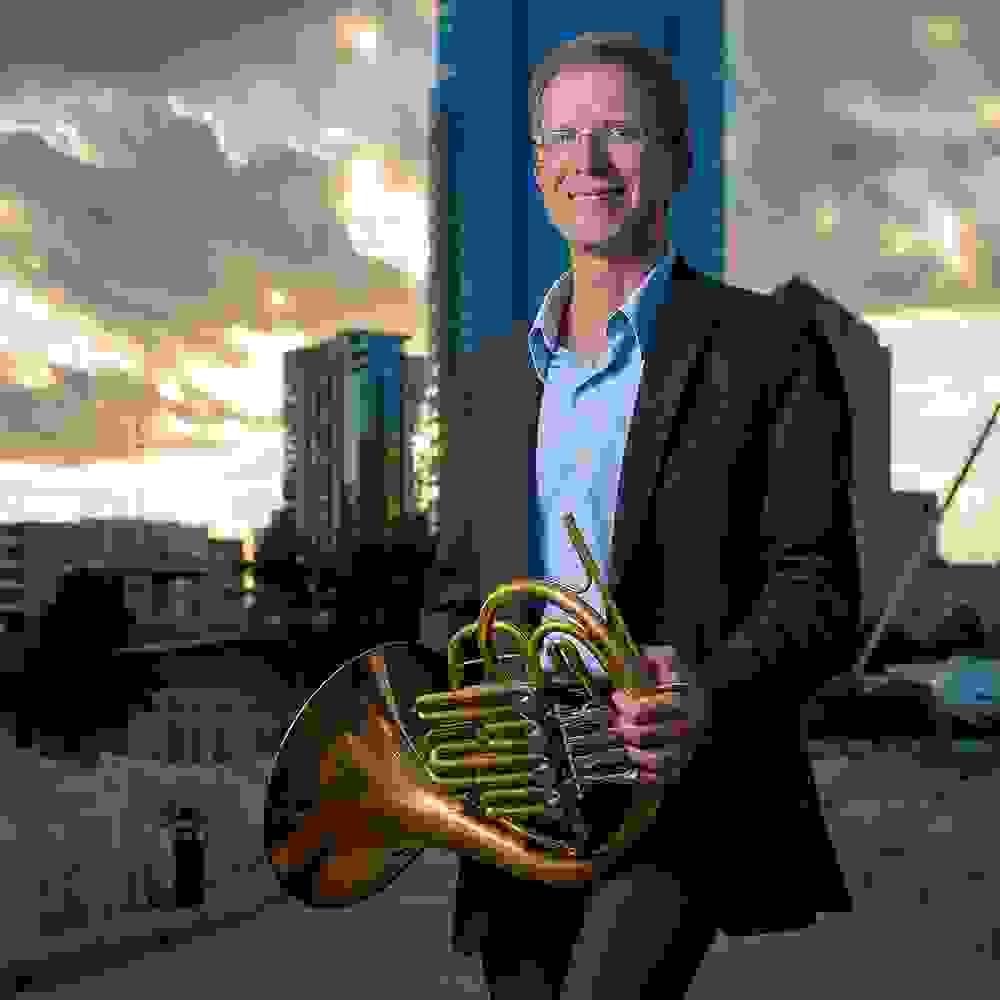
Matthew Annin, horn
Matthew Annin has held the position of principal horn of the Milwaukee Symphony Orchestra since 2011. He also regularly performs with the Grand Teton Music Festival. Before joining the Milwaukee Symphony, Matthew was a member of the Cincinnati Symphony Orchestra, the Rochester Philharmonic Orchestra, the Louisville Orchestra, as well as the Peninsula Music Festival. He has also performed with the San Francisco Symphony, the Saint Louis Symphony, Buffalo Philharmonic, Chautauqua Symphony, Chicago’s Music of the Baroque, the Grant Park Orchestra, and the Calgary Philharmonic Orchestra. Matthew has enjoyed presenting masterclasses at UW-Madison, UW-Milwaukee, and Lawrence University in Wisconsin. As a soloist, he has appeared on several occasions with the Milwaukee Symphony Orchestra under the direction of Edo de Waart, Francesco Lecce-Chong, and Ken-David Masur, and also as guest soloist with the Milwaukee Youth Symphony Orchestra. Matthew performs exclusively on Kortesmaki horns, instruments artfully crafted by Michigan horn maker Karl Hill.

Alisa Jordheim, soprano
Lauded by the San Francisco Chronicle as “vocally resplendent” and possessing “impeccable coloratura,” in the 2024/25 season soprano Alisa Jordheim makes several role debuts: Violetta in La traviata with Opera Western Reserve, Adina in L’elisir d’amore with the New Philharmonic, Le Fée in Cendrillon with Opera Orlando, Daria prima donna in Viva la Mamma with Florentine Opera, and the Young Woman in Cipullo’s After Life for Music for Remembrance in Seattle and San Francisco, in addition to joining San Francisco Opera for their productions of The Handmaid’s Tale and Un ballo in maschera. On the concert stage, she sings further performances of Carmina Burana with both Pacific Symphony and Evansville Symphony, Christmas concerts with San Diego Opera and the Spreckels Organ Society, and Salute to Broadway in concert with the NW Indiana Symphony. Last season, she returned to the Pacific Symphony for her role debut as Musetta in La bohème, to Florentine Opera for Berginella of Offenbach’s Songbird, made her London debut in concert with the Voces8 foundation, and returned to Amarillo Opera in recital. She also recently returned to the role of Gilda in Rigoletto with both the Pacific Symphony and Amarillo Opera, and made her Thailand Philharmonic Orchestra debut singing Mahler’s Symphony No. 4 and Prangcharoen’s Endless Tears.
Ms. Jordheim recently sang her first performances of Susanna in Le nozze di Figaro in her debut with Virginia Opera, joined the Enescu Festival as First Maid in Der Zwerg, returned to San Diego Opera as Despina in Cosi fan tutte, and returned to Central City Opera for Adele in Die Fledermaus and for further performances of Gilda in Rigoletto. She made her role and company debut as Clothilde in Pacini’s Maria, regina d’Inghilterra with Odyssey Opera, was engaged as Norina in Don Pasquale in a return to Boston Midsummer Opera, sang Hannah in The Merry Widow with the New Philharmonic, Rossini’s Stabat Mater with the Bach Collegium San Diego, and joined the Bochumer Symphoniker in a concert of Rachmaninoff and Gershwin. Ms. Jordheim made her company and role debut as Gilda in Rigoletto with San Diego Opera, sang Ninetta in Rossini’s La Gazza Ladra with Teatro Nuovo, Mozart’s Exultate Jubilate with Milwaukee Symphony, Mozart’s Mass in C minor with the Bel Canto Chorus, along with various concerts with the New Philharmonic and the New York Opera Society. She also recently joined Palm Beach Opera for Cunegonde in Candide, made her Paris Opera debut as 1st Knappe in Parsifal, returned to Florentine Opera for both Venus in Venus and Adonis and Belinda in Dido and Aeneas, and joined Boston Midsummer Opera for Rosina in Il barbiere di Siviglia.
Ms. Jordheim created the role of Lola in Aldridge’s Sister Carrie with Florentine Opera, a commercial recording of which was released on Naxos Records. Other recent performances include: Barbarina in Le nozze di Figaro with the Milwaukee Symphony Orchestra, Serpetta in La finta giardiniera with On Site Opera and Atlanta Opera, Yum Yum in The Mikado with DuPage Opera, Constance in Dialogues des Carmélites at the Caramoor International Music Festival, Marzelline in Fidelio with Madison Opera, Nannetta in Falstaff with Emerald City Opera, Micaëla in Carmen with the Columbus Symphony Orchestra, and Satirino in La Calisto with Cincinnati Opera, where she previously sang Zweite Knabe in DieZauberflöte and the Page in Rigoletto. She returned to Florentine Opera as Lulu Baines in Aldridge’s Elmer Gantry after participating in the company’s studio, where she sang numerous mainstage roles with the company including Miss Wordsworth in Albert Herring, Barbarina in Le nozze di Figaro, and Frasquita in Carmen, as well as excerpts of Adina in L’elisir d’amore. She is also a former participant in San Francisco Opera’s prestigious Merola Opera program, where she sang both Lucia in The Rape of Lucretia and Barbarina in Le nozze di Figaro. With Central City Opera, she sang Flora in The Turn of the Screw, Ellen in Oklahoma!, Fredrika in A Little Night Music, and Sirena in a family matinee performance of Rinaldo and received both the Bonfils-Stanton Foundation Young Artists Training Program Award and the Young Artist Award.
On the concert stage, she has sung Torke’s Book of Proverbs at the Grant Park Music Festival, the title role in Gisle Kverndokk and Aksel-Otto Bull’s Letters from Ruth with the New York Opera Society at the National Gallery of Art, Mozart’s Requiem and Haydn’s Insanae et vanae curae with Ensemble Pygmalion at the Chapelle Royale du Château de Versailles, further performances of Mozart’s Requiem with Baltimore Symphony, Yum Yum in The Mikado with the Northwest Indiana Symphony, “A Bernstein Banquet” with the Southwestern Suburban Symphony, Brahms’s Ein deutsches Requiem with the Las Vegas Philharmonic and Lawrence University, Bach’s St. John Passion with Madison Bach Musicians, Mahler’s Symphony No. 4 with the Madison Symphony Orchestra, Handel’s Messiah with Madison Bach Musicians and the Milwaukee Symphony, Bestienne in Bastien und Bestienne also with the Milwaukee Symphony Orchestra, The Rose in Portman’s The Little Prince with Cincinnati Chamber Opera, Mendelssohn’s A Midsummer Night’s Dreamwith the Columbus Symphony Orchestra and Greeley Philharmonic, Orff’s Carmina burana and Mozart’s Exsultate, jubilate with the Fox Valley Symphony, and Bach’s Cantata No. 29 with the Dayton Philharmonic.
She holds both a Master of Music and Bachelor of Music from the University of Cincinnati College-Conservatory of Music, where her roles included Zerlina in Don Giovanni, Pamina in Die Zauberflöte, and Echo in Ariadne auf Naxos in addition to singing Mozart’s Mass in C minor, with previous studies at Lawrence University. Ms. Jordheim is the 2016 Rose Bampton Award winner by The William Matheus Sullivan Musical Foundation, where she was also a career grant recipient in 2015. She was awarded an American Scandinavian Foundation Fellowship and US Student Fulbright Foundation Travel Grant for study and research in Scandinavia towards her doctoral work, also at the University of Cincinnati. She is a two-time winner of the Wisconsin district of the Metropolitan Opera National Council Auditions, 2015 winner of the Bel Canto Regional Artists Competition, and the second place winner of the Auditions Plus Classical Singer Vocal Competition. She is also the recipient of the Edith Newfield Scholarship in the Musicians Club of Women Scholarship Competition.
Villa Terrace Museum & Gardens
The Villa Terrace Art Museum is a Mediterranean country house dropped into an urban setting. As a result, the house and garden contrast dramatically with neighboring structures.
Designed for both elegance and domesticity, guests enter via the arched iron gate into the Museum's courtyard. Here, visitors enjoy summer concerts where the Smith family children once played.
Perched atop a bluff, overlooking Lake Michigan, the Villa's location was chosen by architect David Adler to provide a view of Lake Michigan like no other. It is for this view that the home was named: Sopra Mare, meaning "above the sea" in Italian.
Museum visitors may enjoy the view along with a stroll through the Vila's award-winning gardens which extend from the lower terrace to Lincoln Memorial Drive.














